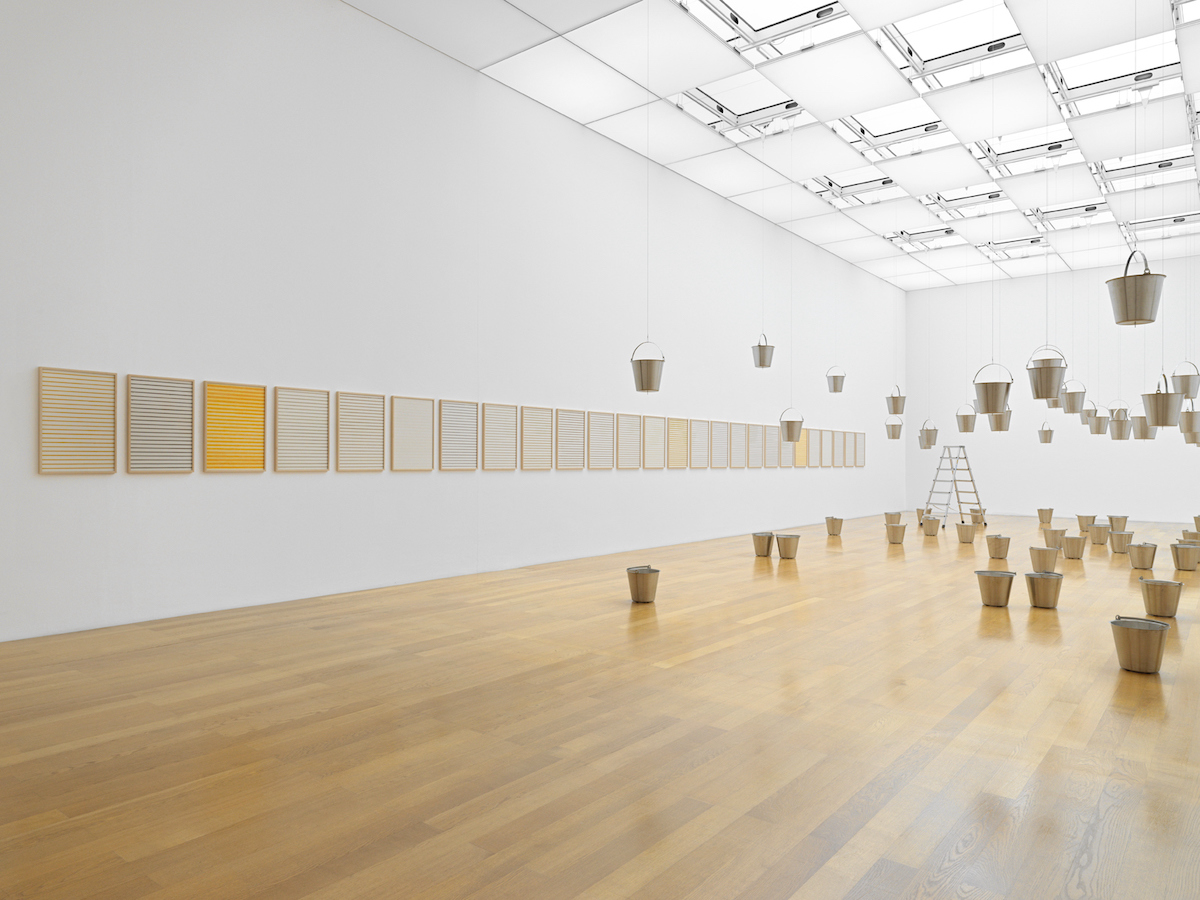Food powder on PVC-boards, adhesive tape, 26 parts
each panel 71.5 × 50 cm
Private collection / Kunstmuseum Liechtenstein, Vaduz
Edible Alphabet consists of twenty-six panels with coloured horizontal stripes on white grounds, whose form is reminiscent of the language of abstract painting in 1960s minimal art. However, the pigments used here are spices (powdered foods) from all over the world affixed to PVC panels with adhesive tape.
The names of the spices in different languages make up the Latin alphabet and define the order in which the panels are hung from A to Z: Açafrão, Black pepper, Colorífico, Dill, Espinafre, Feijão árabe, Gergelim, Hähnchen, Indian curry, Jamaican pepper, Kräutersalz, Lorbeer, Mustard, Noz moscada, Orange, Pimenta chili, Quatre épices, Rote Bete, Semente de papoula, Tomate, Urucum, Vinaigrette, Wasabi, Xique-xique, Yellow corn flour, Zattar. A sensuous metaphor of the world with its wide variety of spices, aromas, odours and colours linked to one of the bases of human communication: the alphabet.
The work is characterised by a strong interest in cultural, psychological and sociological questions. In this context the artist explores traditions and conventions, picking up on them and developing them further, often creating something new with the aid of participatory and playful forms. With aesthetic ease she probes everyday worlds of imagination and language. "Language has always played an important role in my work." The link between the smallest unit of the alphabet, the letter, and the wide range of spices from across the world prompts free associations, encouraging us to season inherent structures with a rich variety of constituents. How can an existing language be transformed into a new, poetical, human-centred language? How can we succeed in making space for new utterances? In her work, Neuenschwander trusts in the power of poetry.
Christiane Meyer-Stoll
"In the late '90s, my work involved simple, ephemeral materials familiar to people living in Brazil: garlic peels, ants, dried flowers, soap bubbles, spice, dust, coconut soap, water, slugs. I liked to reflect on great philosophical themes – time, mortality, God – through insignificant and somewhat invisible things."
Rivane Neuenschwander
